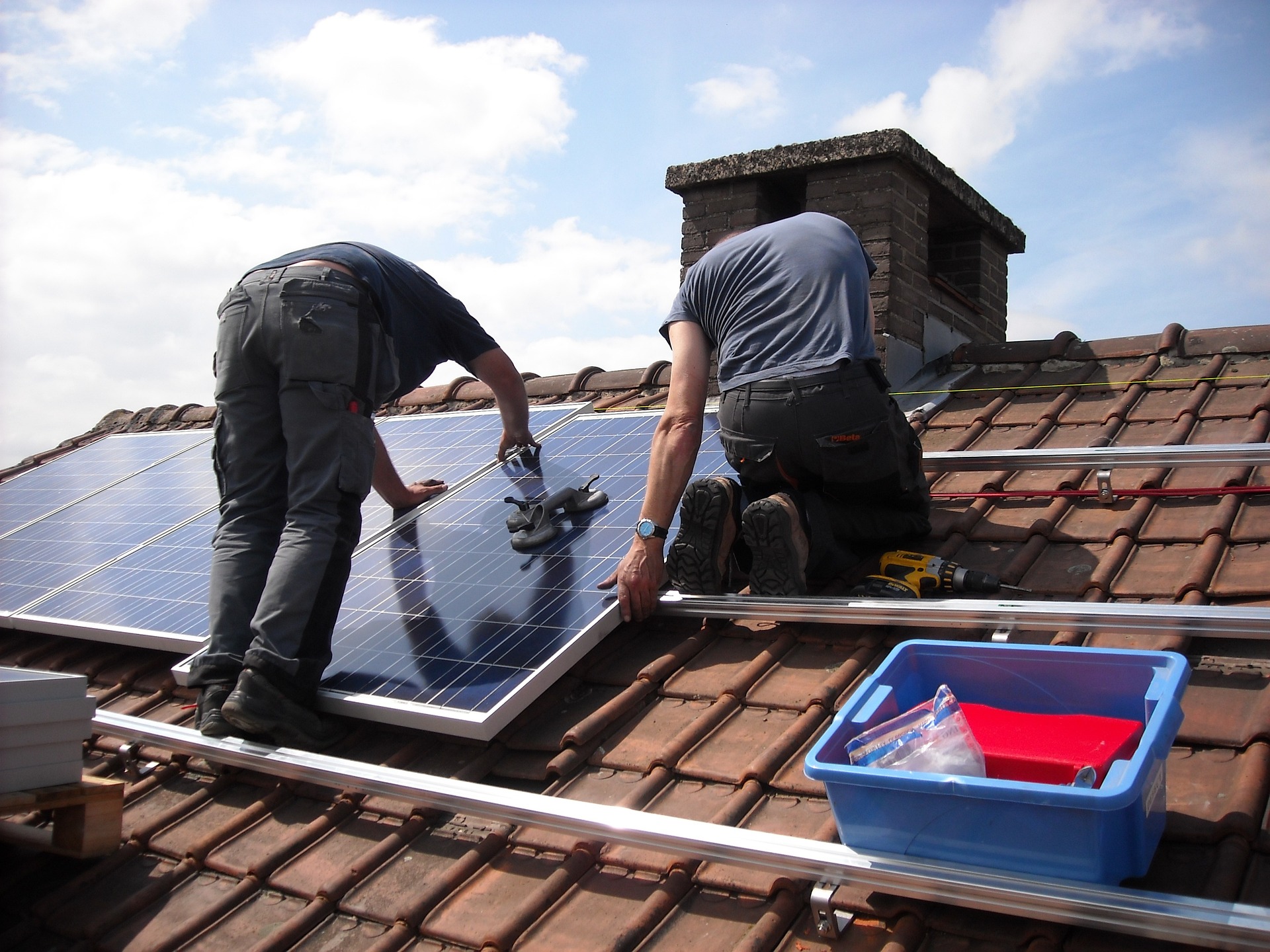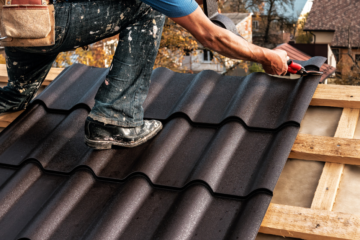
The Difference Between Solar Panels and Solar Roofing
A solar panel is a grouping of cells that capture sunlight to produce energy. These cells are connected together to form panels. Other names you may have heard for solar panels include solar electric panels, solar cell panels, or photovoltaic (PV) modules. These panels are typically installed on roofs and used to provide power for the structure. Solar power technology was first developed in the 1800s.
In contrast, a solar roof absorbs energy from sunlight not through a panel installed over an existing roof, but through the roofing materials themselves. By using the term “solar roof,” one may either be describing the entire roof, or just a section of it.
If you are a homeowner looking to use solar energy, the comparisons below may help you make a decision between installing either solar panels or a solar roof.

Solar Roofing Advantages
Solar roofs present several advantages to homeowners. People who install a solar roof not only save money on their utility bills but also usually see an increase in their home’s value.
Unlike solar panels, solar roofs are aesthetically pleasing! Good-looking solar roofs were developed as manufacturers heard from concerned homeowners who wanted to be more energy efficient without sacrificing curb appeal. Solar roofs’ sleek appearance integrates seamlessly into most structures’ designs.
There are several kinds of solar roofs to consider:
Solar Metal Roofing
A solar metal roof is made up of several layers of material, including a layer of solar cells. The top layer of a solar metal roof is made of tempered glass. All of the wiring and hardware for the solar roofing is invisible, and the homeowner may choose from a wide variety of colors!
Interlocked Solar Panel Roofing
The solar panel sections in interlocking solar panel roofing resemble traditional asphalt shingles or clay tiles in their installation. The panels interlock like traditional shingles to protect the home from air, water, and debris.
Solar Shingles
Solar shingles resemble asphalt roofing shingles, which is an attractive feature to many homeowners. Like other solar roofing styles, solar shingles’ wiring and hardware are hidden, contributing to their sleek and subtle appearance. Of the several varieties of solar shingles on the market today, monocrystalline shingles offer the highest efficiency.
The initial cost of installing solar shingles is much higher than installing solar panels that cover a comparable area. One reason for this is that the technology is still relatively new.
Solar Panel Advantages
Although they are ultimately bulkier in appearance, solar panels are a more developed technology, are generally more trusted because of this, and have lower costs and more practical advantages over solar roofing.
One major plus is the mobility of a solar panel. Solar panels can be angled, which increases their efficiency in transferring sunlight to usable energy, and they can be removed and reinstalled, if necessary (though generally not encouraged).
A second advantage is the cost. Ultimately, solar panels are significantly less expensive than solar roofing to install. If little to no roof work is needed, the costs of installation are even lower.









